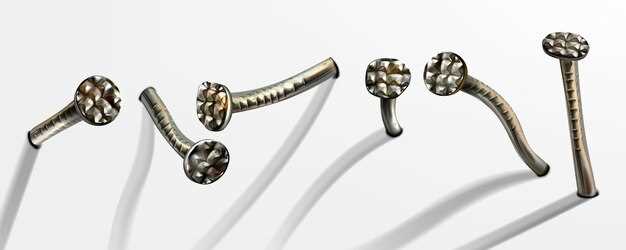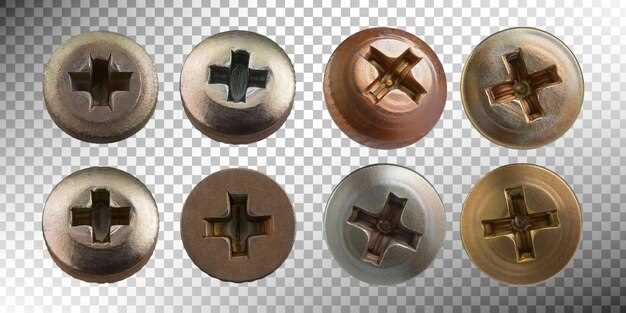
In an age where security is paramount, the need for reliable anti-theft solutions has never been more critical. Anti-theft screws and fasteners offer a practical approach to safeguarding valuable assets, particularly in settings where removable plates or components are commonly found. These hardware solutions are designed to deter theft by incorporating unique locking mechanisms that are resistant to standard tools, making unauthorized removal significantly more difficult.
The implementation of anti-theft fasteners spans various applications, including outdoor signage, electronic equipment, and even furniture. Each of these scenarios presents unique vulnerabilities, and the right fasteners can provide an effective barrier against theft while maintaining the aesthetic integrity of the installation. Security comes not just from the design of the locking mechanism, but also from the constellation of materials and finishes that enhance durability and weather resistance.
Understanding the different types of anti-theft screws–from one-way screws to those requiring specialized keys or tools–allows users to make informed choices tailored to their specific security needs. This article will delve into the mechanics of these innovative fasteners, explore their applications, and provide guidance on selecting the best options for your projects, ensuring peace of mind and enhanced security for your valuable assets.
Types of Anti-Theft Screws: Choosing the Right Option for Your Needs

When considering anti-theft screws, it’s essential to understand the various types available to select the most suitable option for your requirements. These screws are specifically designed to deter theft and unauthorized removal of attached components.
1. Torx Security Screws: These screws feature a star-shaped socket with a pin in the center, making them challenging to remove with standard tools. Torx security screws are widely used in automotive applications, electronics, and furniture due to their durability and resistance to tampering.
2. One-Way Screws: One-way screws are designed to be easily installed but very difficult to remove. The head is shaped in such a way that a standard screwdriver can turn it in one direction only. This type is often used in public spaces to prevent unauthorized access to fixtures.
3. Clutch Head Screws: These screws utilize a unique head design that requires a specific key or tool for removal, preventing the use of typical screwdrivers. Clutch head screws are commonly found in outdoor furniture and playground equipment, providing effective security while maintaining aesthetic appeal.
4. Security Hex Screws: Similar to standard hex screws, but with added security features like pin-in-head designs. These screws require specialized tools for installation and removal, making them ideal for various applications, including industrial settings and high-security environments.
5. Breakaway Screws: Designed to break off at a predetermined torque, these screws provide a high level of tamper resistance. Once installed, the remaining head is challenging to grip, making removal nearly impossible without specialized equipment. Breakaway screws are ideal for applications requiring permanent fixtures.
When choosing anti-theft screws, consider factors such as the materials of the plates, environmental conditions, and the potential for exposure to tools that could compromise their security. Understanding the specific requirements of your application is crucial for selecting the best anti-theft solution.
Installation Guide: How to Properly Secure Plates with Anti-Theft Fasteners
Securing plates with anti-theft fasteners is essential to prevent unauthorized removal or tampering. Follow these steps to ensure a proper installation.
1. Gather Necessary Tools and Materials: Before starting, collect all required items. You will need anti-theft fasteners tailored for your plates, a drill, appropriate drill bits, a screwdriver, and a level to ensure proper alignment.
2. Choose the Right Anti-Theft Fasteners: Select fasteners that are specifically designed for the type of plates you are securing. Options include one-way screws, tamper-resistant bolts, or lockable fasteners. Ensure they fit the plate dimensions and surface material.
3. Mark the Installation Points: Place the plate in its desired position. Use a level to ensure it is straight. With a pencil, mark the locations where the fasteners will be installed. Double-check the spacing and alignment before proceeding.
4. Drill Holes for Fasteners: Using a drill, create holes at the marked locations. Choose a drill bit that matches the diameter of the chosen fasteners. Ensure the holes are straight and clean to facilitate easy insertion of fasteners.
5. Insert Anti-Theft Fasteners: Begin by inserting the fasteners into the drilled holes. If using one-way screws, adjust the screwdriver to the head type and carefully turn until secure. For tamper-resistant bolts, you may need a specific tool to tighten them properly.
6. Test Fastener Security: After all fasteners are installed, check the security by trying to wiggle or pull on the plates. There should be no noticeable movement. If any fastener feels loose, tighten it accordingly.
7. Inspect Regularly: Once installed, periodically inspect the plates and fasteners. Look for signs of wear or tampering. Replace any damaged fasteners immediately to maintain security.
By following these steps, you can effectively secure plates using anti-theft fasteners, reducing the risk of theft or vandalism.
Maintenance Tips: Ensuring Longevity of Your Anti-Theft Screws and Plates

To ensure the durability and effectiveness of your anti-theft screws and fasteners, regular maintenance is essential. Start by periodically inspecting the screws and plates for signs of wear, corrosion, or damage. Early detection of issues can prevent more significant security breaches.
Keep the surfaces clean and free from debris. Dirt and moisture can contribute to corrosion, so use a soft cloth and mild cleaner to wipe down the plates and screws regularly. Avoid harsh chemicals that may damage the finish or material.
Check the tightness of the screws at regular intervals. Vibration from surrounding equipment or environmental factors can loosen fasteners over time. Ensure that they are securely fastened without over-tightening, which could lead to stripping the screw threads.
Consider applying a protective coating or rust inhibitor to the screws and plates. This can provide an additional layer of defense against moisture and rust, especially in outdoor applications or humid environments.
Store replacement screws and fasteners properly, keeping them in a cool, dry place. Ensure that the entire installation area is kept clean to prevent dirt buildup that may affect the performance of the screws.
If you notice any signs of wear or damage during inspections, replace the affected screws or plates immediately to maintain security. Using original or manufacturer-recommended replacement parts can help ensure compatibility and reliability.
Finally, keep an inventory of your anti-theft hardware, noting the installation date and any maintenance performed. This practice allows for better tracking of wear patterns and helps in anticipating when components may need replacement.
